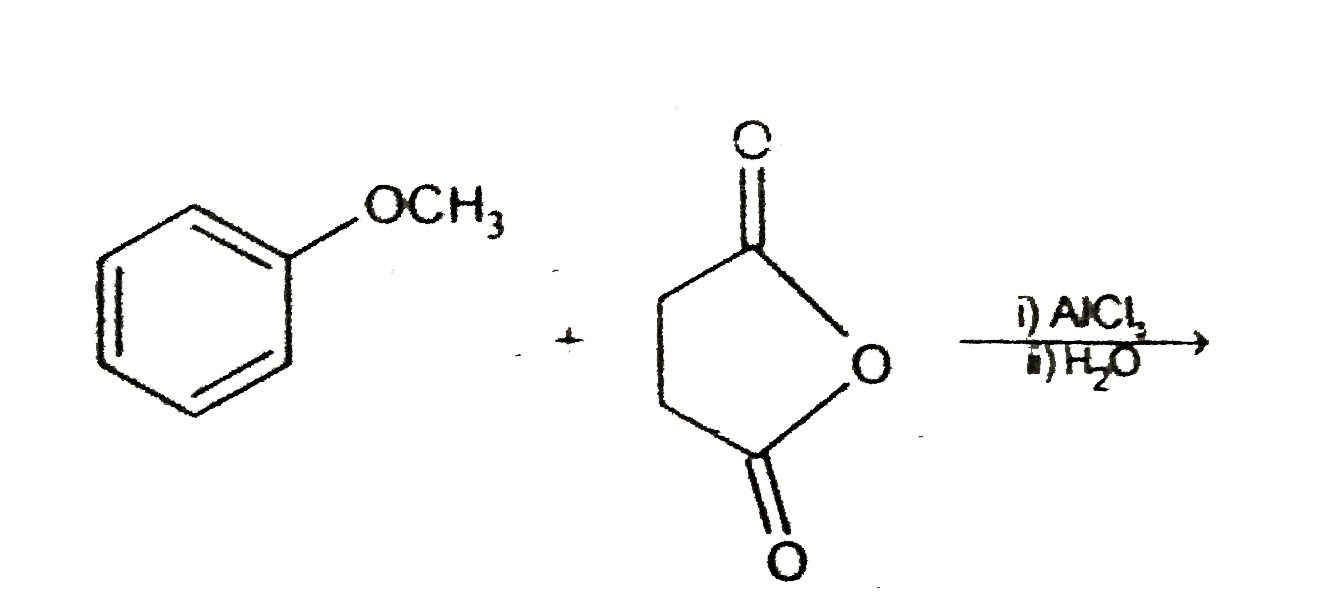(I)Mel+PH360%acetone+40%H2O−−−−−−→Me⊕PH3+IΘ
(II)Mel+PH3H2O−−→Me⊕PH3+IΘ
Increase in solvent polarity stablilises the T.S., lowers Eact, and increases the rate.
If both (A) and (R) are true, but (R) is the correct explanation of (A)
If both (A) and (R) are true, but (R) is not the correct explanation of (A).
If (A) is true but (R) is false.
If (A) is false but (R) is true.
The correct Answer is:A
To solve the problem, we need to analyze the two reactions provided and understand the role of solvent polarity in influencing the reaction rate.
1. Identify the Reactions:
- Reaction (I): Mel + PH₃ in 60% acetone and 40% water produces Me + PH₃ + I⁻.
- Reaction (II): Mel + PH₃ in 100% water produces Me + PH₃ + I⁻.
2. Determine the Reaction Mechanism:
- Both reactions are likely following an SN2 mechanism, where a nucleophile (PH₃) attacks the electrophile (Mel), leading to the formation of the product (Me) and the leaving group (I⁻).
3. Transition State Formation:
- In an SN2 reaction, a transition state is formed where the nucleophile is partially bonded to the electrophile. The stability of this transition state is crucial for the reaction rate.
4. Effect of Solvent Polarity:
- The assertion states that increasing solvent polarity stabilizes the transition state. In polar solvents, the transition state can be better solvated, which lowers the activation energy (Eₐ) required for the reaction to proceed.
5. Comparison of Reaction Rates:
- Since reaction (II) occurs in 100% water (a highly polar solvent), it is expected to have a lower activation energy compared to reaction (I) in a less polar solvent (60% acetone and 40% water). Therefore, the rate of reaction (II) is greater than that of reaction (I).
6. Conclusion:
- The assertion is correct: the rate of reaction (II) is greater than that of reaction (I) due to the higher polarity of the solvent stabilizing the transition state, thus lowering the activation energy and increasing the rate of reaction.
Final Answer:
- Both the assertion and reason are correct, and the reason provided is the correct explanation for the assertion.
- Reaction (I): Mel + PH₃ in 60% acetone and 40% water produces Me + PH₃ + I⁻.
- Reaction (II): Mel + PH₃ in 100% water produces Me + PH₃ + I⁻.
- Both reactions are likely following an SN2 mechanism, where a nucleophile (PH₃) attacks the electrophile (Mel), leading to the formation of the product (Me) and the leaving group (I⁻).
- In an SN2 reaction, a transition state is formed where the nucleophile is partially bonded to the electrophile. The stability of this transition state is crucial for the reaction rate.
- The assertion states that increasing solvent polarity stabilizes the transition state. In polar solvents, the transition state can be better solvated, which lowers the activation energy (Eₐ) required for the reaction to proceed.
- Since reaction (II) occurs in 100% water (a highly polar solvent), it is expected to have a lower activation energy compared to reaction (I) in a less polar solvent (60% acetone and 40% water). Therefore, the rate of reaction (II) is greater than that of reaction (I).
- The assertion is correct: the rate of reaction (II) is greater than that of reaction (I) due to the higher polarity of the solvent stabilizing the transition state, thus lowering the activation energy and increasing the rate of reaction.
- Both the assertion and reason are correct, and the reason provided is the correct explanation for the assertion.
Topper's Solved these Questions
- BOOK - CENGAGE CHEMISTRY ENGLISHCHAPTER - ORGANIC REACTION MECHANISMEXERCISE - Archives8videos
ORGANIC REACTION MECHANISM
- BOOK - CENGAGE CHEMISTRY ENGLISHCHAPTER - ORGANIC REACTION MECHANISMEXERCISE - True/False2videos
ORGANIC REACTION MECHANISM
- BOOK - CENGAGE CHEMISTRY ENGLISHCHAPTER - ORGANIC REACTION MECHANISMEXERCISE - Single correct43videos
ORGANIC REACTION MECHANISM
- BOOK - CENGAGE CHEMISTRY ENGLISHCHAPTER - NCERT BASED EXERCISEEXERCISE - Chemical Equilibrium73videos
NCERT BASED EXERCISE
- BOOK - CENGAGE CHEMISTRY ENGLISHCHAPTER - P-BLOCK GROUP 13 - BORON FAMILYEXERCISE - Exercise Archives (Subjecive)9videos
P-BLOCK GROUP 13 - BORON FAMILY
Similar Questions
Knowledge Check
- Question 1 - Select One
H_(3)C-overset(O)overset(||)(C)-CH_(2)-CH_(2)-CH_(2)-CH_(2)-overset(o+)(P)Ph_(3)underset(Delta)overset(Boverset(ϴ)(u)overset(o+)(Li))(to)(X), Major product (X) is:
A B
B C
C D
D
- Question 2 - Select One
Ph−CH∣Ph−O∣∣C−CH3CF3CO3H−−−−−→XH⊕/H2O−−−−−→Y+Z
Y and Z are respectively:APh−CH∣Ph−O∣∣C−OH and CH3OHB CCH3OH bothDNone of these
CCH3OH bothDNone of these - Question 3 - Select One
Ph−O∣∣C−CH3NaNO2−−−−→HCl(A)AC2O−−→heat(B)H3O+−−−→(C)
Product ( C) of the above reaction is :APh−CO2HBPh−O∣∣C−CO2HCPh−O∣∣C−O∣∣C−HDPh−O∣∣C−CH2OH
Ph−CH=CH−CHO(i)CH3CH2MgBr−−−−−−−−−−−→(ii)H3O⊕−−−−−−→(X)Cu,Δ−−−→(Y)
View SolutionIdentify the product (P) : Ph−C≡CHO3−−−−−→Zn−H2OP
View SolutionXSn/HCl−−−−→NaNO2−−−−→HClZCuCN−−−→Δ(P)H3O−−→Ph−COOH correct options is/are:
View SolutionReaction I Ph−O∣∣C−NH2⊕OD,Br2−−−−→A
Reaction II Ph−O∣∣C−ND2⊕OD,Br2−−−−→B
Products A and B are :View SolutionPh−CH2−CH2CH3∣⊕N∣CH2CH2CH3−CH3ΘOH−−→Δ
View Solution

